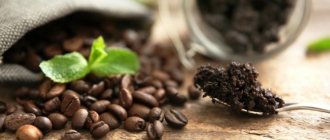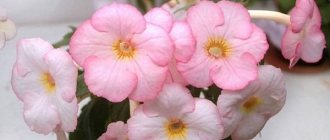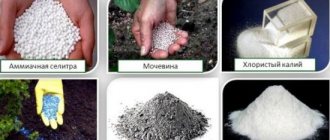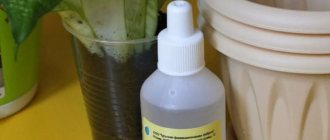Indoor flowers decorate our lives all year round. This is especially noticeable in winter. Plants planted in pots need to be fed periodically. Watering alone will not be enough for maintenance. The soil in the pot is depleted within the third month after planting or transplanting into a new substrate. All flowering plants, especially when actively growing, need more frequent feeding. There are many varieties of fertilizers sold. They cost money, sometimes a lot. We suggest considering the option of feeding flowers with sugar.
Why feed indoor flowers with sugar 2. What flowers to use for 3. Proportions for preparation 3.1. Granulated sugar 3.2. Sweet drink 3.3. Glucose 4. When to add
Photo: Many indoor plants love sugar fertilizers.
Sugar fertilizer is suitable for many indoor plants. Especially in the autumn-winter period for those plants that lack sunlight all year round, stand in a dark room, in the hall or simply in a place where there is no sunlight. This fertilizer should be used all year round!
I learned about this product when I was still in school. There was no Internet then. I read books about floriculture in the library. I had a lot of flowers, and at that time I tried all the folk remedies that were described in them. The plants responded especially well to the sweet fertilizer that I made from sugar.
Many experienced flower growers, especially those of the old school, know about this secret ingredient. In this article you will learn everything about feeding with sugar. Having tried it once, I think you will periodically pamper your pets with a sweet cocktail.
Can sugar be used as fertilizer?
Plants suffer most when the amount of sunlight and heat is limited. It is during the cold season that the development and growth of domestic flowers slows down. Due to the lack of light, the process of photosynthesis is complicated, and the plant is forced to consume its own hidden reserves.
Sugars are consumed first, so glucose is needed first for feeding.
If you properly organize watering of flowers with added sugar, they will grow healthy and strong, despite the coolness and lack of sunlight. BUT! It is also useful to arrange artificial lighting. This will create the illusion of sunny days.
The benefits of sweets
It is believed that feeding flowers with sugar is most necessary in winter, since at this time the sun is not often and the plants lack ultraviolet radiation. The same goes for greenery in dark rooms or planted in the shade. Sunlight is necessary for photosynthesis, but if it is not very active, then plants begin to use up their hidden reserves. The first thing that comes into play is sugar. This is why sweet fertilizers are so necessary in winter. Some hobbyists combine feeding home plants with sugar and installing lighting with a fluorescent lamp.
There are experiments that prove that plants that receive sugar supplements in the spring grow faster, become stronger and healthier. Such specimens bloom or sprout more often.
Benefits of Sugar for Plants
When the sugar additive gets into the ground, it breaks down into fructose and glucose. Fructose does not penetrate the plant structure, so it does not work well as a fertilizer. And glucose is absorbed by tissues and converted into:
- lipids;
- nucleins;
- proteins;
- starch;
- cellulose
The resulting energy is enough for plants to actively grow and develop.
In order for glucose to be better absorbed, flowers at home must be fed with yeast. When they break down, carbon dioxide is released, which promotes proper and complete absorption of glucose.
Additional organic additives
To maximize the nutritional value of glucose nutrition, it is allowed to mix it with other useful components.
- Wood ash. The benefits of ash have been known for a long time. It will enrich the soil with calcium, magnesium, iron and phosphorus, and helps reduce the acidity level of the soil in a flower pot. Ash does not contain nitrogen, so it is added only to increase leaf mass. It also protects roots from diseases and pests, improves the structure of the soil and disinfects it.
- Coffee grounds. Dormant coffee acts as mulch, allowing moisture to remain in the soil longer.
- Banana and citrus peels. They are dried, crushed and used to prepare infusions for irrigation. Pieces of fruit peels rot in the ground, saturating it with valuable elements.
- Yeast creates flora for active growth, and also nourishes the substrate with B vitamins, phytohormones, auxins, and cytokinins.
Also very often crushed onion peels and eggshells are added, which contain many useful microelements.
When is feeding needed?
The lack of vitamins in crops is determined by the following signs:
- slow growth;
- faded color of stems and leaves;
- thinning of shoots;
- long absence of flowering;
- change in leaf size downward;
- sickly appearance or leaf drop.
The plant needs feeding
Rules for breeding and watering
Sugar is used both for watering plants and for spraying on leaves. To prepare the mixture you need 1 tbsp. l. Dissolve sugar in 1 liter of liquid. For foliar feeding, this solution is diluted with water in a ratio of 1:2.
Sometimes flower lovers simply sprinkle sugar on the soil and water generously. In this case, fertilizer is applied in a proportion of 1 tsp. (without slide) for a pot diameter of 10 cm. Increasing the surface requires an additional 0.5 tsp for every 20 cm. sweet fertilizer.
If the diameter of the pot is less than 10 cm, 0.5 teaspoon per 1 liter of water is enough. In this case, you should not sprinkle granulated sugar on the ground, because the fertilizer will be absorbed into the soil more slowly, and there is a risk of mold and midges appearing on the surface.
Water should be taken that has settled, as for regular irrigation.
In order not to harm the plant, after the first feeding you should carefully monitor the reaction of the flower. If it looks healthy and blooming, then this fertilizer is suitable for it. If there is a negative reaction, you need to find another suitable option.
Combination with yeast
Yeast is used to improve glucose absorption. When they break down, carbon dioxide is formed.
The sweet yeast mixture is prepared as follows: 1 tsp. sugar is mixed with 1 g of dry yeast, diluted in 1 liter of water. The solution is consumed at the rate of 100 ml per 1 kg of soil.
This type of feeding of indoor plants cannot be done often; once a season is enough.
If you use yeast in large quantities, they absorb potassium and calcium from the soil, which will immediately affect the condition of the crop.
You can compensate for the lack of carbon dioxide without yeast by loosening the soil.
The procedure is performed every week. Two days before manipulation, the plant should be watered with plain water so that the soil is not excessively wet or dry.
After loosening, the flower will receive an influx of carbon dioxide and will be able to better absorb glucose.
Adding Ash
Experienced gardeners add wood ash along with this additive - 5 g per 1 liter of water.
But note that some plants do not tolerate ash well. These include azalea, calla lilies, anthurium, gardenia, and cypress. These flowers love acidic soil, and ash alkalizes it.
How often to water flowers with sugar
You need to water the plant properly. High soil moisture can harm the crop: spots appear on the leaves, stems lose strength. If there is an excess of sugar or water, the roots rot and the plant dies. Glucose can cause insects to appear, which is also harmful to the flower.
Watering with sugar once every 1-2 months is considered normal.
Some gardeners are confident that fertilizing should be done every week, but skeptics refute this opinion, believing that it is better not to top up than to overfill. And there is some truth in this, because sugar in large quantities can become poisonous to plants.
Do not forget that irregular feeding also affects the condition of the flower. A one-time sprinkling of sugar will only have a temporary effect, and if the procedure is not repeated, the problems will return again.
The first time fertilizer is applied 2 months after planting, when the plant gets stronger and gets used to new conditions.
First, water indoor flowers with plain water, and then give a small amount of sugar mixture. For diseased crops, the concentration of the solution is halved.
Features of application
Sugar can be replaced with pharmaceutical glucose. To do this, dissolve 2 tablets in 1 liter of warm water.
When spraying the prepared solution, the likelihood of mold should be taken into account, therefore, in addition to glucose, you need to treat the soil with Baikal EM-1 or Vostok EM-1. These products will protect the plant from unpleasant consequences.
Refined sugar can replace regular granulated sugar.
Phalaenopsis love sugar compresses. To prepare the lotion, dry wipes or clean cotton cloth are soaked in a sweet spray solution and placed on the leaves.
After 20-30 minutes, the compress can be removed. If you don’t have time for lotions, then just wipe the leaves with a cotton pad soaked in the solution.
Crassula (popularly the money tree) often lacks moisture in the room. To do this, its leaves are sprayed with sugar fertilizer, which attracts the missing liquid.
House flowers in pots, even with proper fertilization, must be periodically replanted in new soil. In this regard, it is worth knowing that the plant needs to be watered with a sugar solution 2 months after the procedure.
If a crop does not take root well in a new place, then fertilizing is postponed for a longer time. There is no need to rush; you need to let the root structure take root in the substrate.
In advanced cases, injections into the flower trunk are recommended. But this is done in a serious condition, when other methods are ineffective. It is dangerous to let the plant reach this point: it may die without waiting for help.
Sweet cocktail
Sugar can be poured into a pot of flowers, one teaspoon at a time, then watered with clean water, or a special liquid can be made. In order to make a sweet and healthy solution, you need to take one tablespoon of sugar and dilute it in half a liter of water.
There is no consensus among scientists on how often to use this fertilizer. Some cite studies in which they applied white natural fertilizer every week and achieved excellent results. Others argue that you need to make the life of plants sweeter no more often than once every couple of months. Therefore, every lover of indoor flowers will have to solve this issue independently. The main thing is not to overdo it and prevent the formation of rot or mold.
Using sugar as fertilizer in the garden
Fertilizing with sugar is carried out not only for indoor, but also for garden flowers. This helps the plant strengthen its root system, increase the growth of healthy shoots and the flowering period.
The solution for the garden is prepared as follows: dissolve 1 tbsp in 2 liters of boiling water. l. sugar and yeast.
After mixing the fertilizer, the container is left in a warm place for 7 days. 200 g of the infused mixture is mixed with 10 liters of water and fertilized with vegetables.
You can apply fertilizer in the garden once a month.
Basic mistakes
When using sugar fertilizers for indoor flowers, many novice gardeners make some mistakes. The most common of them are:
- Watering too often. Excessive watering of plants removes nutrients from the soil. This can also cause rotting of the root system and death of the crop.
- Irregular application of fertilizer. Feeding with sugar gives a good but temporary result, improving the health of indoor plants only for a while. That is why it is important to carry out such care regularly.
Expert opinion
Fertilize indoor and garden crops with water and sugar. If you follow the rules of watering, the plants acquire a healthy appearance, as they receive all the necessary vitamins from broken down glucose. When watering, it is important to normalize the volume and frequency of fertilizer, since an excess can provoke the death of the species.
If you use ready-made pharmacy glucose as a basis, then you should additionally take care of the soil by treating it with EM preparations (the use of effective microorganisms) to reduce the risk of mold.
Glucose
Pure glucose can also be used to feed indoor plants. This substance is even more effective, although it is not found in every home. It must be purchased at a pharmacy. One or two such tablets should be diluted in a liter of water, then water the resulting solution on the plant or spray its leaves.
The benefits of sugar-based fertilizers for indoor and not only indoor plants have long been proven both in theory and in practice. Now all we have to do is use the recommendations of experts. But you need to take into account that the effect for different types of plants may differ. Prickly cacti and ficus are especially fond of sweets. But even here it is important not to overdo it with fertilizing, because excessive additives can also harm the plant.
When using sugar or other fertilizers to feed indoor plants, you should pay special attention to watering. Excessive volumes of water can contribute to the leaching of nutrients from the soil. Also, because of this, the root system may begin to rot and signs of disease will appear, such as weakened stems and leaves that are yellowed or covered with strange spots. You need to know moderation in everything, and then the green creatures that live on the windowsills will give you beautiful and fragrant flowers. It is also necessary to remember about a systematic approach and regular care of plants. One spoon of sugar will undoubtedly give results, but only temporary. The procedure must be repeated regularly, as needed, and not wait for unwanted crises.











